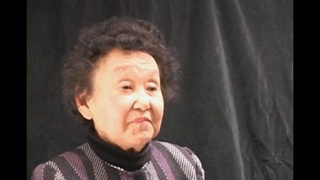Interviews
Camouflage Net Weaving in Manzanar
The first job that I got was the weaving of camouflage nets and immediately managed to get ourselves into trouble. A lot of criticism from people assigned by the military to check the nets after we had woven it. We had the patterns underneath and there were two things that if you weren’t very good at it, which I wasn’t, that you did—one was to weave through both nets, the pattern net/reference net and the one you were weaving so they wouldn’t come apart once you were finished, and the other was to make mistakes. I could see them take the net we worked on and put it on the ground and these men would stride around and look at it, finding mistakes all over the place. That was my first job.
Date: August 6, 1998
Location: California, US
Interviewer: Janice Tanaka
Contributed by: Watase Media Arts Center, Japanese American National Museum








